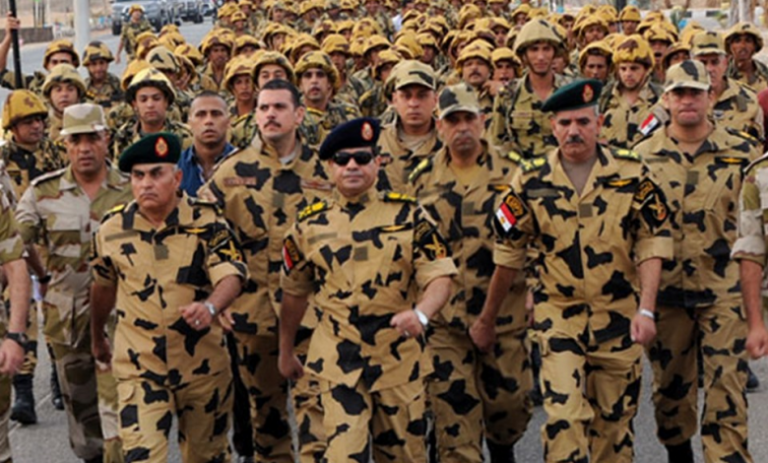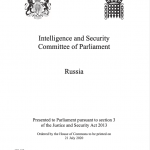Plans to invade Libya by Egypt could have been pursued by Abdel Fattah el-Sissi government since the summer of 2016. Meanwhile, Moscow not just held information about such invasion prepared, but was engaged in active Egyptian units’ training for warfighting and task group deployment considering Libya’s territory configuration.
Egypt’s parliament has authorized the deployment of troops abroad after President Abdel Fattah el-Sissi threatened military intervention against “criminal militias” and “foreign terrorist groups” on a “western front”. These forces are Turkish-backed in Libya. Sissi has warned of a military intervention to protect Egypt’s border with Libya, a move that could bring Egypt and Turkey, who support rival sides in Libya’s proxy war, into direct confrontation.
However, the Egyptian parliamentary resolution does not indicate Libya as a specific area to invade. This fact, considering the high risks for Cairo in case of active involvement in the Libyan conflict, gives Fattah el-Sissi a free hand to use the parliamentary permission to maintain an operation against Ethiopia over the threat of fresh water shortage after the Renaissance Dam reservoir is filled up. Despite this opportunity was opened up, we see no indicators for such operation being prepared.
Libya as the future operation target is indicated just by the President of Egypt’s statements.
Cairo conducts military exercises near the Libyan border and seeks to consolidate Haftar and his supporters. Egypt stopped Libyan tribes from siding with Tripoli, following Haftar’s military losses, by threatening to take military action.
The first signs of Cairo’s preparations for an operation in Libya became visible 4 years ago.
The joint Russian-Egyptian military exercises that started Oct. 15, 2016 in Egypt included participants from the Airborne Troops and Special Operations Forces of Russia (SOF).
The Russian troops were deployed by five IL-76MD aircraft from Dyagilevo (Ryazan Oblast) to Alexandria (Borg Al Arab). According to the official report, about 250 servicemen from the Airborne Troops and Special Operations Forces were engaged in the training, equipped with BMD-2 airborne assault vehicles (6 units equipped with landing systems), BTR-D armored vehicle, tented truck and other special-purpose vehicles, including airdrop capable all-terrain vehicles.

Many details suggested that the task of the Russian group was to perform evaluation of joint capacity and coordinated activity during operations. Moreover, the analysis of video footage suggested that Russian troops transfer the urban combat skills to their counterparts.
According to the general concept of Russian Special Forces, the missions of special operations teams can be supported by airborne units and GRU Spetsnaz. Therefore, the composition of the Russian group in Egypt could be viewed as a Special Operations Forces team with an attached Airborne unit.
From the Egyptian side, the participants included only the parachute troops. This suggested preparations for tactical operations with air deployment of airborne units in compact company and battalion tactical groups. In practical exercises, special emphasis was given to parachute jumps from the altitudes of 2000, 6000 and 7000 feet, using the parachute systems such as D-10, T-10V, Arbalet and MS-5. The jump exercises were performed from IL-76MD aircraft of the Russian Air Forces, C-130 and CASA of the Egyptian Armed Forces, landing on the unfamiliar target, called Tallet, in the desert location with sand dunes up to 1.5 m high. These types of parachute systems are used by special operations troops to land on unprepared surfaces amid adverse weather conditions at low altitudes.
The landing conditions corresponded to the desert areas of Libya.
We assume the airdrop mission training was determined by the distance between the Egyptian army locations and targets in Libya, not allowing for the rapid troops transfer and deployment by land.
In case the military operation in Libya is launched, the Egyptian army is unlikely to act on its own, but together with the LNA units and Russian mercenaries from the Wagner PMC, as well as small groups of Russian SOF, acting as coordinators, providing intelligence and interaction with tribal units in the fighting area.
However, considering the assessments of the anti-terrorist operation efficiency in Sinai, it is doubtful whether Egypt is able to maintain a military campaign in Libya, far away from supply bases and logistics centers, amid simultaneous clashes with Turkish troops.
The operation launched in Libya threatens the security and stability of Egypt itself amid uncertainty over the issue of water resources with Ethiopia. Consequently, Moscow, targeting to use regional destabilization policy to strengthen its own hand and implement the Machiavelli’s principle “divide et impera”, remains the only actor seeking to embroil Egypt in the war in Libya.




